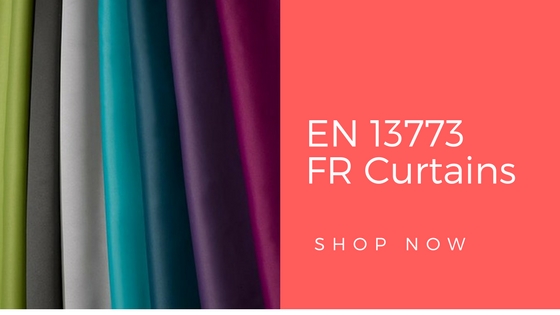Guide to Fire-Resistant Roller Blinds for Enhanced Commercial Safety
Guide to Fire-Resistant Roller Blinds for Enhanced Commercial Safety
In an era where safety is paramount, the selection of suitable window treatments for commercial spaces goes beyond aesthetics. It is crucial to consider the safety features, particularly fire resistance, that such choices can offer. This comprehensive guide to fire-resistant roller blinds has been meticulously curated to enhance the safety of your commercial premises. It aims to enlighten readers about the importance and benefits of fire-resistant roller blinds, bringing to the fore, insightful information that can guide your decision-making process.
In commercial settings, fire safety is not just a legal obligation but a moral responsibility. In this guide, we delve into the world of fire-resistant roller blinds, exploring their construction, functionality, and cutting-edge technology that bolsters their fire-resistance capability. We also shed light on the regulations and standards that these blinds must meet to qualify as 'fire-resistant'.
Whether you manage a bustling restaurant, a high-rise office building, or a cosy local library, our guide will provide valuable knowledge that can significantly contribute to your fire safety approach. Installing fire-resistant roller blinds could be a game-changer, adding an extra layer of protection, potentially saving lives, and minimising damage in the unfortunate event of a fire.
Benefits of FR Roller Blinds for Your Business
Investing in fire-resistant roller blinds offers several advantages for businesses operating in different industries:
- Enhanced Safety: Manufactured with fire-retardant materials, these blinds can resist ignition and significantly reduce the risk of fire spreading in your commercial space.
- Compliance: Installing fire-resistant roller blinds showcases your commitment to safety and adherence to required industry regulations, ensuring the welfare of employees and clients alike.
- Aesthetic and Practical Flexibility: FR roller blinds come in a variety of colours, designs, and materials, providing an attractive window treatment while prioritising safety.
- Easy Installation and Maintenance: Roller blinds are relatively simple to install and maintain, making them a convenient and cost-effective option for commercial window treatments.
Important Regulations and Standards for FR Blinds
Understanding the relevant safety regulations and certifications for fire-resistant roller blinds is essential when selecting the appropriate product for your business:
- British Standards: BS 5867 Part 2 covers the flame retardancy requirements for fabrics used in curtains, drapes, and blinds. Ensure your chosen blinds comply with this benchmark.
- Industry-Specific Regulations: Different commercial sectors have specific fire safety standards, such as those in care homes, hotels, offices, and schools. Partner with an expert supplier like Direct Fabrics to select blinds that align with your industry's requirements.
- Proper Certification: Verify that the FR roller blinds come with the necessary certification, such as test reports or compliance documents, that confirm the product's adherence to safety standards.
Selecting the Right Material and Design for Your FR Roller Blinds
Choosing the optimal material and design for your fire-resistant roller blinds requires careful consideration of several factors:
- Material: Fire-resistant roller blinds are available in different fire-retardant fabrics, such as polyester, glass fibre, and blackout materials. Determine which material best suits your business's functional and aesthetic requirements.
- Design and Colour: Consider your commercial space's existing style and decor when selecting the blinds' design and colour. Strive for a cohesive aesthetic that enhances your workspace's overall appearance without sacrificing safety.
- Functionality: Assess the specific needs of your business, such as light control, privacy, or insulation, and ensure your fire-resistant roller blinds cater to those functionalities.
Installation and Maintenance Tips for FR Blinds
To maximise their performance and longevity, FR roller blinds require proper installation and regular maintenance:
- Professional Installation: Engage a reputable supplier like Direct Fabrics that offers professional installation services, ensuring the optimal functionality and precise fit of your fire-resistant blinds.
- Regular Cleaning and Maintenance: Follow the manufacturer's guidelines for routine cleaning and maintenance of your roller blinds, preserving their appearance and fire-resistant properties over time.
- Prompt Repairs: Address any signs of wear or damage as soon as possible by seeking professional repairs or replacement. Timely action will maintain your blinds' effectiveness and ensure continued compliance with safety standards.
Understanding the Importance of FR Roller Blinds in Commercial Spaces
Fire-resistant roller blinds are a vital safety measure for various businesses. Balancing fire safety, functionality, and aesthetic appeal requires understanding relevant regulations and industry standards and considering factors such as material, design, and functional requirements.
Collaborating with a trusted supplier like Direct Fabrics ensures your commercial space adheres to the best practices when integrating fire-retardant curtains and roller blinds into your workspace, maintaining a safe and visually appealing environment.
By selecting the right FR roller blinds for your business and implementing professional installation and proper maintenance, you can foster a secure, comfortable, and visually stunning setting that nurtures growth, productivity, and satisfaction.
Equip your commercial space with a perfect blend of safety and design by choosing Direct Fabrics' premium range of fire-resistant roller blinds. Contact our dedicated team today to discuss your unique requirements and discover the ideal solution tailored to your business needs.






